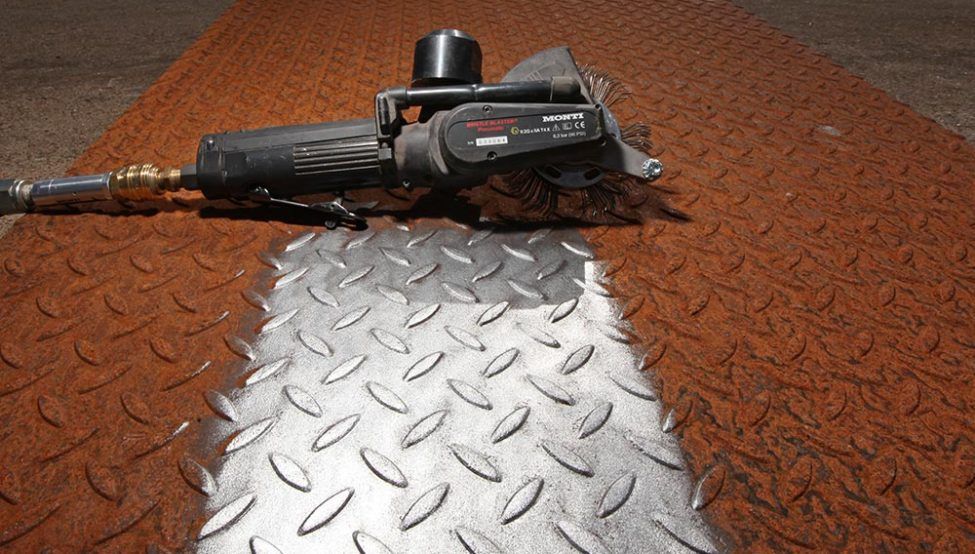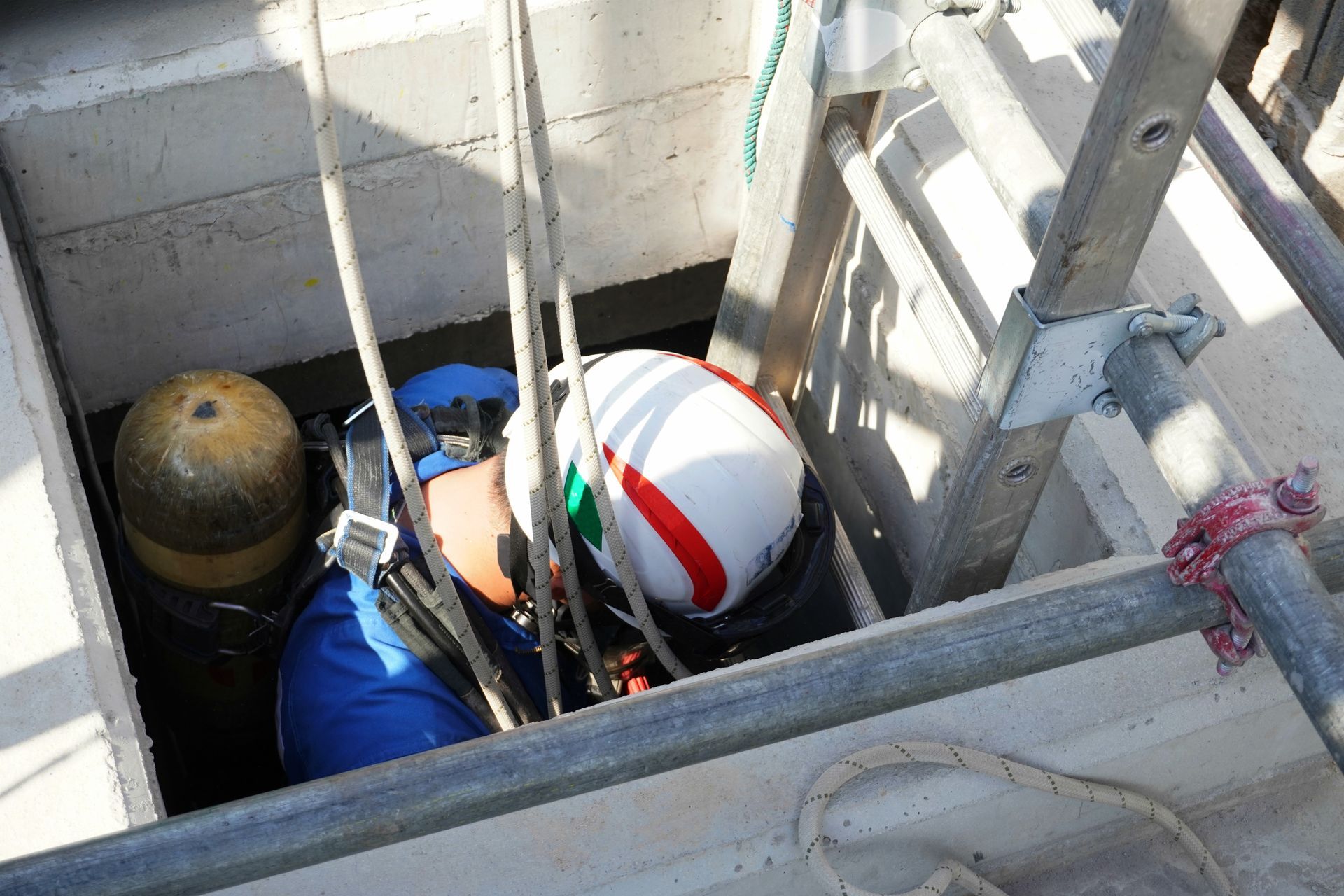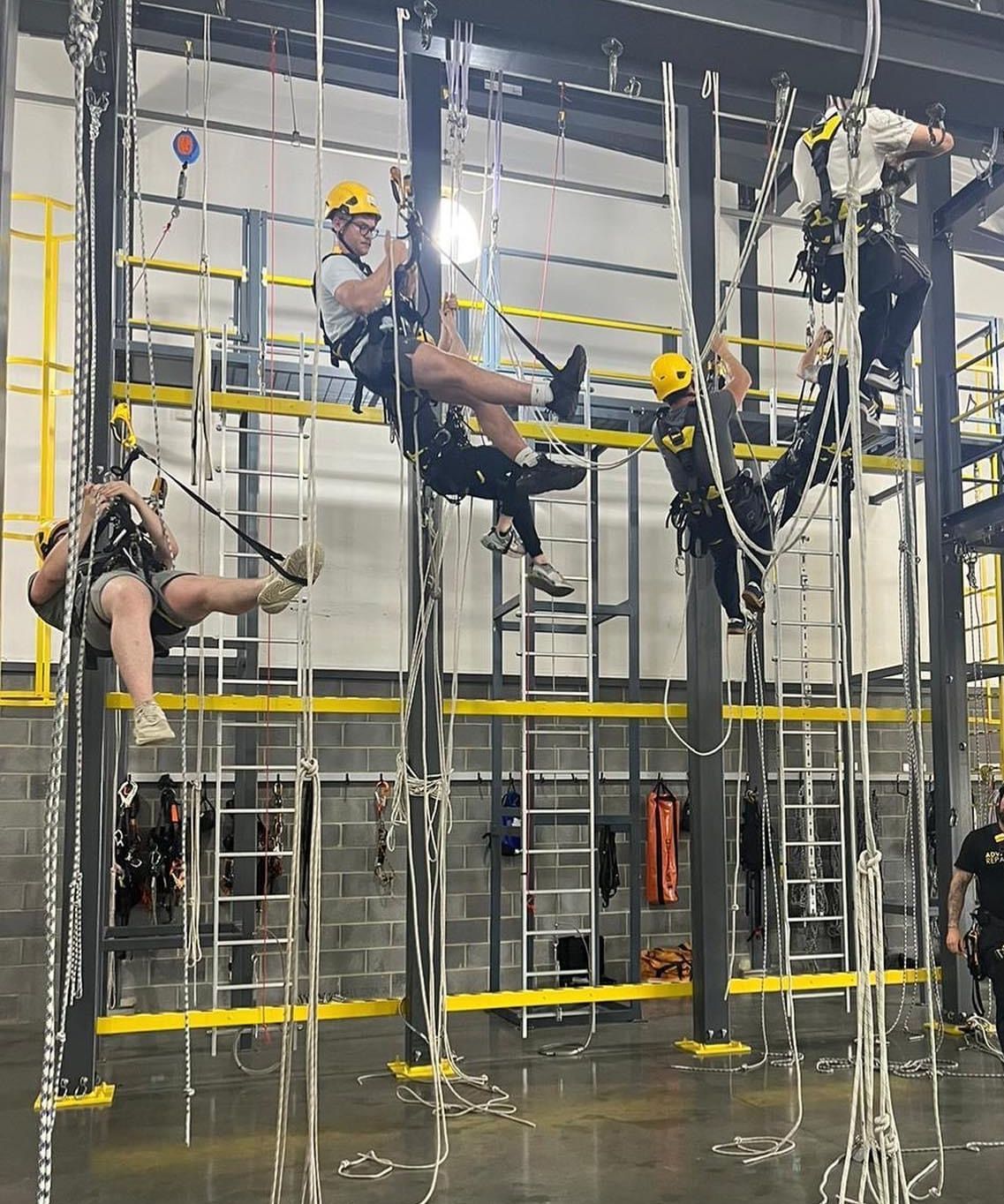by Dangle Academy
•
18 April 2025
Why More Companies Are Choosing Rope Access for Confined Space Work In today’s industrial landscape, confined space work remains one of the most challenging and high-risk tasks for companies across a wide range of sectors. Whether it’s cleaning inside storage tanks, inspecting silos, or conducting maintenance in utility tunnels or petrochemical plants, the complexity, danger, and logistical hurdles of confined space operations demand nothing short of excellence in planning, access, and execution. Traditionally, this type of work required extensive scaffolding, large teams, and lengthy setup times — often resulting in increased cost, risk, and downtime. But that’s changing. More companies across Ireland and the UK are turning to Dangle and rope access in confined spaces as a faster, safer, and more cost-effective solution for confined space work . In this article, we’ll explore why rope access is becoming the go-to method for confined space work , and how it enhances safety and efficiency. What is Confined Space Work? A confined space is defined as any fully or partially enclosed space that: Is not designed for continuous occupancy Has limited entry and exit points (usually only one) May pose health and safety risks such as lack of oxygen, toxic gases, or physical hazards Examples include: Storage tanks Boilers Silos Incinerators Underground vaults Utility shafts Vessels Sewers and pipelines Confined space work involves entering these environments to carry out inspections, repairs, cleaning, welding, painting, or maintenance. Given the physical restrictions and potential hazards, it’s classified as high-risk confined space work and must comply with stringent safety regulations in Ireland, the UK and across the EU. Rope access is proving to be a transformative approach in the realm of confined space work . This innovative method is rapidly gaining traction among companies seeking to overcome the traditional challenges associated with confined space operations. The appeal lies in its ability to deliver enhanced safety, efficiency, and cost-effectiveness. The Traditional Challenges of Confined Space Work Performing confined space work presents several operational and safety challenges for asset owners: Limited mobility and access Poor ventilation and oxygen-deficient atmospheres Risk of toxic exposure or flammable gases Difficulties in rescue operations Cumbersome entry methods using scaffolding or mobile platforms These factors not only increase risk but also drive up operational costs and project timelines. In many cases, companies must halt or limit production during confined space entry, resulting in revenue losses. Rope Access: A Modern Solution for Confined Space Challenges Rope access is revolutionising the way companies approach confined space work . Instead of relying on large, immobile access structures, technicians use ropes, harnesses, lanyards and fall-arrest systems to safely enter and operate within tight spaces. The method is rooted in climbing and caving techniques but has evolved into a globally recognised safe system of confined space working developed by organisations such as IRATA ( Industrial Rope Access Trade Association ) . How Rope Access Works in Confined Spaces Rope access in confined space work typically involves: Pre-entry permit to work, risk assessment and atmospheric testing like gas testing Installation of rope access and retrieval systems Certified technicians using two-rope systems (working line + backup line) Continuous monitoring and standby rescue teams Use of communication systems, gas monitors, and RPE and PPE This method allows highly skilled rope access technicians to carry out precise work in confined environments with greater mobility, speed, and control. Why Companies Are Switching to Rope Access for Confined Space Work Unmatched Safety Standards Safety is paramount in confined space work . With rope access, the entire operation is built around redundant systems and rigorous safety protocols. • Dual-rope system provides fall protection and redundancy • Certified technicians undergo regular training and assessments • Pre-installed rescue systems allow for immediate extraction • Gas detection and atmospheric monitoring are continuous According to industry data, rope access has one of the lowest incident rates in the industrial sector — a testament to its controlled, methodical approach. Rapid Deployment and Project Turnaround Rope access technicians can mobilise quickly, often completing setup within hours instead of days. There’s no need for large scaffolding crews or heavy equipment. • Faster setup and teardown • Minimal interruption to plant operations • Jobs completed in a fraction of traditional timelines This speed translates to reduced downtime, which is critical in sectors such as oil & gas, energy, pharmaceuticals, and utilities. Operational Cost-Effectiveness Rope access significantly reduces the overall cost of confined space work by: • Eliminating scaffolding and platform hire • Requiring smaller, more skilled teams • Reducing setup and access time • Minimising operational downtime For companies seeking efficient maintenance without breaking the budget, rope access offers an exceptional return on investment, contact Dangle for further advice or to receive a free no obligation quote for your next project. Versatility and Flexibility Rope access adapts to even the most complex and awkward confined space work — whether horizontal, vertical, or with irregular internal structures. From underground tanks to vertical silos, rope technicians can position themselves exactly where needed using only their skills, minimal tooling and equipment. • Navigate complex internal geometries • Perform precision tasks (e.g., welding, NDT, inspection, painting, cleaning) • Easily integrated with confined space work and rescue protocols This flexibility allows rope access to support a diverse range of industries and maintenance tasks. Built-in Rescue Readiness One of the biggest concerns in confined space work is emergency rescue. Dangle's rope access teams are not only trained in confined space entry — they’re also certified in casualty rescue, with dedicated standby technicians on every job. At Dangle, all technicians are trained in: • Rope-based confined space rescue • Use of winch and tripod systems • CPR and first aid for high-risk environments This means your project doesn’t just meet legal safety obligations — it exceeds them. Sectors Benefiting from Rope Access in Confined Spaces Energy & Utilities • Inspections inside turbines, boilers, and tanks • Emergency repairs during shutdowns • Cleaning of heat exchangers Pharmaceutical & Food Processing • Internal cleaning and integrity checks of vessels • Maintenance in sterile, hard-to-access environments Manufacturing • Silo and hopper cleaning • Welding repairs and corrosion protection Water & Wastewater Treatment • Accessing underground chambers and tanks • Structural inspections and leak testing Oil & Gas / Petrochemical • Confined space NDT in hazardous atmospheres • Gas monitoring and ATEX-compliant work methods Rope Access in Ireland: Why It’s Gaining Momentum With a growing focus on safety, compliance, and environmental responsibility, companies are increasingly turning to Dangle's rope access for confined space work . Whether in the green energy sector, industrial hubs like Cork and Limerick, Dublin’s expanding infrastructure or Belfast’s shipbuilding and maintenance at Harland & Wolff , the need for efficient confined space access is rising — and rope access is leading the way. The method’s efficiency and safety benefits have led to its widespread acceptance in industries that demand stringent safety standards and quick turnaround times. Rope access allows these companies to conduct thorough maintenance and repair operations without extensive downtime, thereby boosting productivity and ensuring compliance with industry regulations. Future Trends: The Integration of Technology and Rope Access The future of confined space work lies at the intersection of rope access and smart technologies. At Dangle, we’re investing in tools such as: Wearable gas detectors Confined space entry monitoring systems Breathing apparatus Digital work logging Drone collaboration for external assessments Combining rope access with technology ensures your confined space projects are not only safe and compliant — but also future-ready . Why Choose Dangle’s Academy? Here at Dangle , we pride ourselves on offering a wide range of professional and comprehensive inspection , access , coatings , and composite (IACC) industrial services and training courses to cater to the needs of both the private and public sectors. Our dedication to providing high-quality work at height solutions and training has helped us establish a strong reputation in the industry. With a team of highly skilled and experienced professionals, we are committed to delivering exceptional results that not only meet but exceed our clients' expectations. Our on-site working at height services are designed to minimise maintenance costs in the long and short-term, allowing our clients to save on valuable resources. Located in Belfast, Northern Ireland, our headquarters serve as the centre of our operations across Ireland. However, we also have a Dangle office based in Scotland , ensuring that we can extend our services to a wider clientele across the United Kingdom. No matter where you are located, our team is always ready to assist you with your industrial maintenance or training needs. If you would like to learn more about how our dedicated team can help you, we encourage you to get in touch with us today. Our friendly and professional staff are always available to provide you with the information and support you require. Contact us now to discover the Dangle difference and let us be your trusted partner in meeting your industrial service and training needs today.



